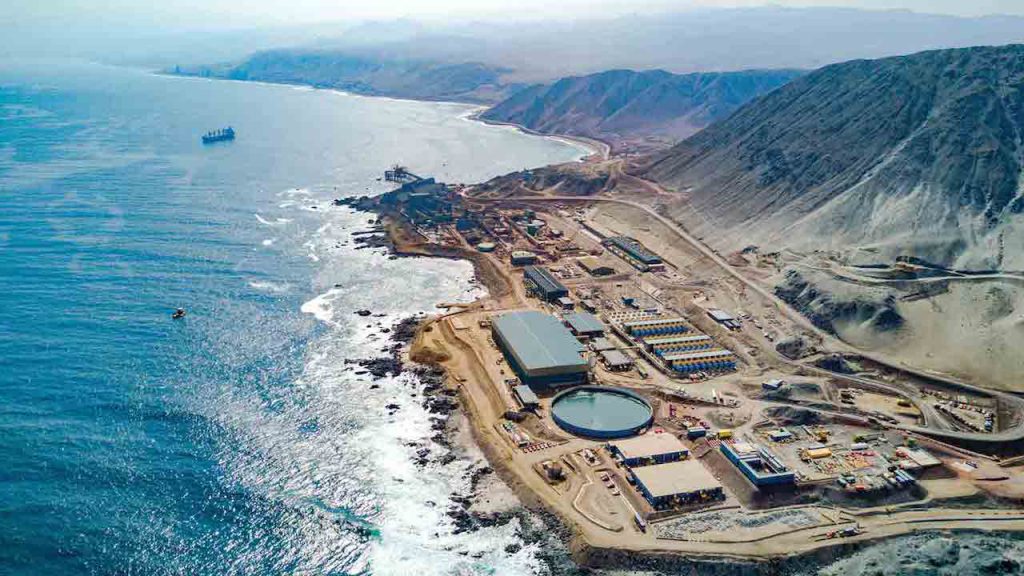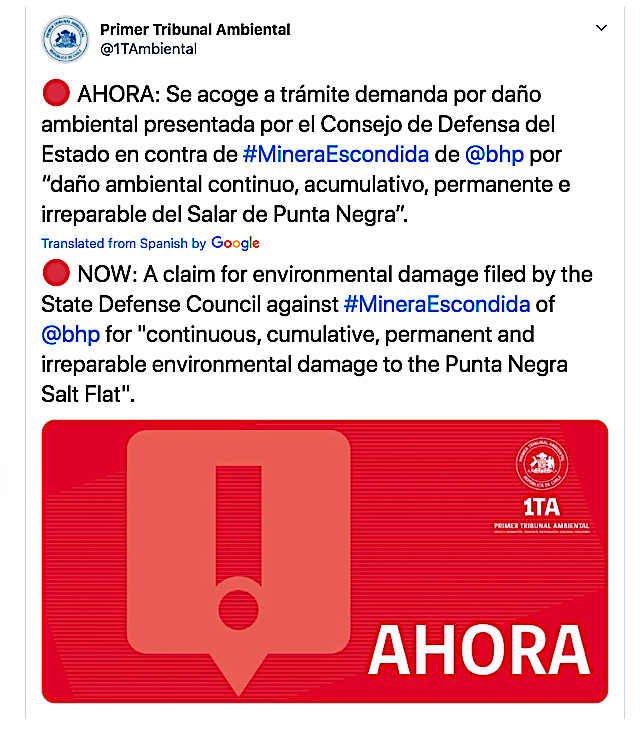Global S&T Development Trend Analysis Platform of Resources and Environment
| Chile court looks at alleged Escondida breaches | |
| admin | |
| 2020-04-15 | |
| 发布年 | 2020 |
| 语种 | 英语 |
| 国家 | 国际 |
| 领域 | 地球科学 |
| 正文(英文) |  Escondida’s desalination plant. (Image courtesy of BHP.)
A Chilean environmental court will look into the State Defence Council’s (CDE) allegations that Escondida copper mine, the world’s largest, has caused “irreparable damage” to the Punta Negra salt flat, in the northern Antofagasta region. In the lawsuit filed against the mine, majority-owned by BHP (ASX, LON, NYSE: BHP), the government agency claims Escondida generated, between 1990 and 2017, “continuous, cumulative, permanent and irreparable environmental damage of Punta Negra.” The bone of contention is the mine’s now-abandoned practice of drawing water from the salt flat. The area is one of the many natural resources that has been depleted after decades of mining activity in and around the Atacama desert, the driest place on Earth, and nearby salt flats.
The lawsuit centres on seven allegations: Severe decrease of the salar’s aquifer’s levels; deterioration or impairment of saline substrate; total or partial depletion of wetlands and associated vegetation; ecosystem loss; modification or loss of wildlife habitat and biodiversity loss. Northern Chile, which hosts some of the planet’s largest copper and lithium mines, is occasionally hit by heavy rains and floods. According to the country’s water authority DGA, however, the area has become drier over the last decade. This has added an extra layer of difficulty for mining companies with projects and operations nearby, at times when the industry’s demand for water is expected to soar as ore grades decline. A spokesperson for BHP acknowledged the claim filed in the Chilean Environmental Court, but noted it had not been served. “We will assess the claim when that happens,” the representative said in an email on April 16. BHP announced in January it would stop getting water from underneath the Atacama salt flat and would use instead desalinated water brought from coastal plants. The world’s no. 1 miner’s decision to not renew a permit to pump 428 litres per second of underground water is expected to reduce pressure on the vast, lithium-rich salt flat. The plain is home to top lithium miners Albemarle and SQM, which also extract fresh water from underneath it.  BHP already gets more than 40% of the water it needs from the ocean and has vowed to stop using fresh water drawn from the surface and underground in Chile by 2030. In 2018, the mining giant spent $3.43 billion on a desalination plant for the Escondida mine, which includes two pipelines to transport the water 3,200 meters above sea level. Other than their high cost, desalination plants also pose worries related to the waste miners generate. That product — brine — is usually pumped back into the reservoir where the water was taken from. This causes an imbalance in the overall water composition, which is harmful to the environment within the sourcing body. |
| URL | 查看原文 |
| 来源平台 | Minging.com |
| 文献类型 | 新闻 |
| 条目标识符 | http://119.78.100.173/C666/handle/2XK7JSWQ/245936 |
| 专题 | 地球科学 |
| 推荐引用方式 GB/T 7714 | admin. Chile court looks at alleged Escondida breaches. 2020. |
| 条目包含的文件 | 条目无相关文件。 | |||||
| 个性服务 |
| 推荐该条目 |
| 保存到收藏夹 |
| 查看访问统计 |
| 导出为Endnote文件 |
| 谷歌学术 |
| 谷歌学术中相似的文章 |
| [admin]的文章 |
| 百度学术 |
| 百度学术中相似的文章 |
| [admin]的文章 |
| 必应学术 |
| 必应学术中相似的文章 |
| [admin]的文章 |
| 相关权益政策 |
| 暂无数据 |
| 收藏/分享 |
除非特别说明,本系统中所有内容都受版权保护,并保留所有权利。
修改评论